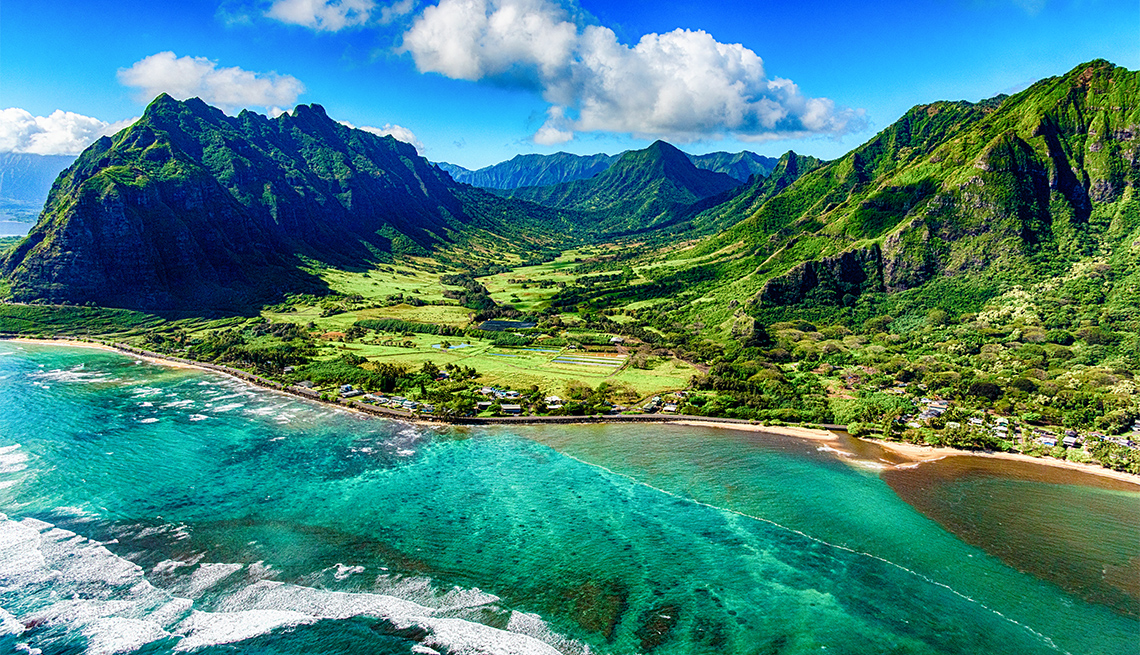In the idyllic embrace of Hawai’i’s tropical beauty, a silent struggle unfolds beneath the surface a battle against invasive species threatening the delicate equilibrium of the islands. Entwined in this ecological saga is the tireless journey of Mohsen Ramadan, an Egyptian-born entomologist whose life’s work mirrors the legacy of early pioneers like Fillipo Silvestri. This narrative bridges the historical significance of Silvestri’s explorations with Ramadan’s modern-day quest to safeguard Hawai’i’s unique ecosystems from invasive threats.
Unveiling a Century-Old Legacy
Silvestri’s 1914 odyssey from Europe to Hawai’i, as chronicled in the yellowed pages of entomological reports, serves as a testament to the historical significance of biological control. The introduction of African wasps by Silvestri successfully curtailed the devastation wrought by fruit flies, a menace to Hawaiian horticulture at the time. Today, Ramadan carries the torch of this century-old legacy, merging the past and present to preserve the ecological integrity of Hawai’i.
Exploratory Entomologist
Ramadan’s odyssey spans continents, from the vibrant landscapes of Southeast Asia to the untamed terrains of Africa. His mission: to uncover natural solutions by identifying insects and pathogens capable of combating invasive species in Hawai’i. With unwavering dedication, Ramadan has scoured the globe for remedies, leaving an indelible mark on the scientific community with his name adorning more than 68 journal articles. His tireless efforts underscore the critical role of exploratory entomologists in preserving Hawai’i’s environmental harmony.
A Decade-Long Wait for Relief
In the realm of biological control, Ramadan’s most recent endeavor involves the macadamia felted coccid a microscopic menace threatening Hawai’i’s lucrative macadamia nut industry. While Ramadan’s research unveils a promising solution, bureaucratic hurdles, regulations, and permitting have stalled its implementation for a decade. The eagerly anticipated release of a minuscule Australian wasp hangs in limbo, leaving macadamia nut farmers grappling with the environmental and economic implications of resorting to pesticides.
Pesticides vs. Biological Controls
The delicate equilibrium between pesticides and biological controls encapsulates Hawai’i’s intricate relationship with agricultural practices. The Hawai’i Macadamia Nut Association faces a pivotal choice release beneficial insects or succumb to the necessity of pesticides. As the president, Nathan Trump, articulates, organic farmers prefer importing and releasing beneficial insects over investing in chemical alternatives that can harm the environment and human health. The economic burden of resorting to pesticides threatens the industry’s two-decade-long pesticide-free legacy.
Mongoose, Cane Toads, and Biosecurity Measures
Hawai’i’s history of introducing species for control dates back to 1890, with 679 species imported until 1985. The repercussions of unchecked introductions became apparent in the mid-1980s, prompting scientists to tighten global biosecurity measures. Ramadan emphasizes that since 1967, releases have been without unintended effects, marking a shift towards more responsible ecological considerations. While acknowledging past mistakes, the modern era places value on the entire ecosystem, steering the process away from the agricultural-centric approach of bygone days.
The Need for Modernized Facilities
Despite the success of biological control, infrastructural challenges pose significant barriers to its full potential. Outdated and inadequate research facilities hinder the efficient study of small organisms crucial for effective biological control. Hawaii Invasive Species Council planner Chelsea Arnott points out the deficiencies in existing facilities, advocating for a $5 million investment in construction and an annual $800,000 for maintenance. Modernizing infrastructure is not just an investment in research; it’s a commitment to environmental protection and the reduction of invasive species’ impact.
The Final Frontier
At 71 years old, Ramadan sets his sights on a final frontier the invasive fountain grass. Linked to the deadly wildfires in Lahaina, this grass species poses a significant threat. Drawing inspiration from Africa, Ramadan envisions a potential solution an unnamed insect and a “smut fungus.” While these natural enemies thrive in the grass’s native range, Hawai’i lacks the facilities to conduct the necessary research. The absence of a dedicated facility may necessitate outsourcing the work to France, emphasizing the critical need for updated infrastructure.
The Human Element in Nature’s Symphony
Beyond the scientific intricacies, the battle against invasive species in Hawai’i is a societal choice between pesticides and the strategic introduction of nature’s allies. Entomologists like Mohsen Ramadan stand on the front lines, armed not just with scientific knowledge but also with dedication and collaboration. The future of Hawai’i’s unique ecosystems hinges on the delicate balance struck between human interventions and the resilient forces of nature.
Conclusion:
In the heart of the Pacific, Hawai’i’s battle against invasive species unfolds as a narrative of resilience and adaptation. Entomologists like Mohsen Ramadan are the unsung heroes, dedicating their lives to preserving the islands’ ecological treasures. The fight against invasive species is not merely a scientific endeavor but a collective responsibility. The choices made today between pesticides and biological controls echo through the generations, shaping the destiny of Hawai’i’s lush landscapes. As nature’s warriors continue their crucial work, the islands stand resilient, a testament to the enduring spirit of harmony between humanity and the natural world.

